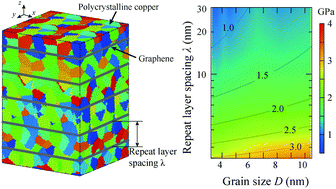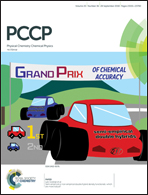Competing roles of interfaces and matrix grain size in the deformation and failure of polycrystalline Cu–graphene nanolayered composites under shear loading
Abstract
The roles of interfaces and matrix grain size in the deformation and failure of polycrystalline Cu–graphene nanolayered (PCuGNL) composites under shear loading are explored with molecular dynamics simulations for different repeat layer spacings (λ), Cu grain sizes (D) and graphene chiralities, and an analytical model is proposed to describe the shear behavior. At the yield stage, the yield stress of the PCuGNL composites is mainly controlled by λ for λ ≤ 15 nm but mainly by D for λ > 15 nm; the yield strain of the composites is approximately a constant value of 0.056, weakly dependent on λ, D and graphene chirality. The shear failure strain and failure stress are determined only by the Cu–graphene interfaces. Small λ reduces the stability of the composites, while large λ decreases their shear failure strength. Considering the yield, failure and interface stability, the optimum λ value for the PCuGNL composites is 2–15 nm. In this optimum λ range, PCuGNL composites can be designed by tailoring Cu–graphene interfaces, regardless of the microstructures of polycrystalline Cu.



 Please wait while we load your content...
Please wait while we load your content...